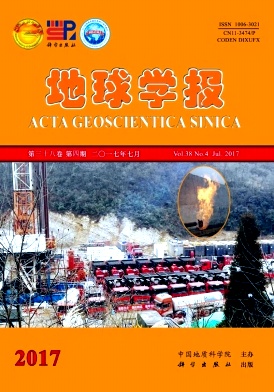CHEN An-dong, ZHENG Mian-ping, SHI Lin-feng, WANG Hai-lei, XU Jian-ming, YUAN Wen-hu. Gypsum230Th Dating of the 15YZK01 Drilling Core in the Qaidam Basin: Salt Deposits and Their Link to Quaternary Glaciation and Tectonic Movement[J]. Acta Geoscientica Sinica, 2017, (4): 494-504. doi: 10.3975/cagsb.2017.04.06
| Citation: |
CHEN An-dong, ZHENG Mian-ping, SHI Lin-feng, WANG Hai-lei, XU Jian-ming, YUAN Wen-hu. Gypsum230Th Dating of the 15YZK01 Drilling Core in the Qaidam Basin: Salt Deposits and Their Link to Quaternary Glaciation and Tectonic Movement[J]. Acta Geoscientica Sinica, 2017, (4): 494-504. doi: 10.3975/cagsb.2017.04.06
|
Gypsum230Th Dating of the 15YZK01 Drilling Core in the Qaidam Basin: Salt Deposits and Their Link to Quaternary Glaciation and Tectonic Movement
-
Abstract
The authors applied230Th dating to 7 samples of the salt-bearing strata from the 15YZK01 drilling core in the Yiliping playa, northwestern Qaidam Basin. The isotope ratios of U and Th contained in gypsum crystals were measured by Neptune Plus multiple collector inductively coupled plasma mass spectrometry (MC-ICP-MS). On the basis of the depth-age plot, calculations show that the 5 salt-bearing deposits should be formed at 733.8~716.0 ka, 581.9~573.8 ka, 181.6~179.3 ka, 158.0~154.2 ka and 32.5~2 ka. The salt deposits recorded in the Yiliping playa can be correlated with Quaternary glaciation and tectonic movement on the Tibetan Plateau: the S1 salt deposit was correlated with the marine isotope stage 18 (MIS18) during the Wangkun Glaciation after the Kunlun-Huanghe Movement; the S2 salt deposit corresponded to MIS15 in the Great Interglaciation; the S3 and S4 salt deposits corresponded to the Gonghe Movement and MIS6 in the Penultimate Glaciation; and S5 began to form during MIS2 in the Last Glacial Maximum (LGM). Based on the summary of the dating ages of salt-forming strata in the Qaidam Basin, the authors confirmed that there existed a certain link between the salt-forming period in the Qaidam Basin and the Quaternary glaciation and tectonic movement on the Tibetan Plateau. In the salt lakes or playas of the western Qaidam Basin salt deposits formed in the Penultimate Glaciation and Last Glaciation have been usually preserved; in contrast, in the Qarhan Salt Lake in the southeast Qaidam Basin there are only salt deposits formed since the Last Glaciation. A reduction in the water supply of the salt lakes during the Quaternary glaciations was an important driving factor for the formation of salt deposits in the Qaidam Basin, whereas the Quaternary glaciations were closely related to the tectonic activities of the Tibetan Plateau.
-

-
-
Access History







 DownLoad:
DownLoad: